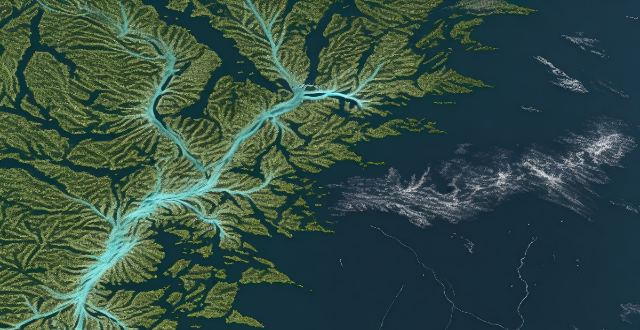Scientists study climate change through observational data, modeling, and field research. They use satellites, weather stations, ocean floats, climate models, paleoclimate reconstructions, ice cores, coral reefs, tree rings, and interdisciplinary collaboration to collect and analyze data. They also publish synthesis reports like the IPCC Assessment Reports to summarize current scientific knowledge on climate change.

How Do Scientists Study Climate Change?
Scientists study climate change through a combination of observational data, modeling, and field research. Here's a detailed look at how they approach this complex topic:
Observational Data
Satellites
- Remote Sensing: Satellites equipped with sensors collect data on various aspects of Earth's climate system, such as temperature, cloud cover, and ice coverage.
- Time Series Analysis: Long-term satellite records help track changes in climate variables over time.
Weather Stations
- Ground-Based Measurements: Networks of weather stations provide real-time data on temperature, precipitation, wind speed, and other meteorological parameters.
- Historical Records: Comparing modern data with historical records helps identify trends and patterns.
Ocean Floats
- Argo Project: Thousands of autonomous floats collect data on ocean temperature and salinity, providing insights into ocean circulation and heat content.
Modeling
Climate Models
- General Circulation Models (GCMs): These sophisticated computer programs simulate the interactions between different components of the climate system, including atmosphere, oceans, land surface, and ice.
- Ensembles: Running multiple simulations with slightly different initial conditions or model parameters helps estimate the range of possible future climates.
Paleoclimate Reconstructions
- Proxy Records: Indirect evidence from sources like tree rings, ice cores, and sediment layers reveal past climate conditions.
- Data Assimilation: Combining proxy data with model outputs creates more accurate pictures of past climates.
Field Research
Ice Cores
- Layer Analysis: By studying the chemical composition and physical properties of ice cores, scientists can learn about ancient temperatures and atmospheric composition.
- Gas Bubbles: Trapped air bubbles provide samples of ancient atmospheres, allowing direct measurement of past greenhouse gas levels.
Coral Reefs
- Growth Bands: The width and density of coral growth bands reflect environmental conditions during their formation.
- Geochemical Analysis: Isotopic ratios in coral skeletons serve as proxies for sea surface temperature and ocean chemistry.
Tree Rings
- Dendrochronology: Variations in tree ring widths and densities reflect changing growing conditions, often linked to climate variability.
- Radiocarbon Dating: Measuring the decay of radioactive isotopes in tree rings helps date climate events precisely.
Integrated Approach
Interdisciplinary Collaboration
- Cross-Disciplinary Studies: Collaboration between experts in fields like meteorology, oceanography, ecology, and geology leads to comprehensive understanding.
- Data Sharing: International initiatives promote open access to data, facilitating collaboration and accelerating scientific progress.
Synthesis Reports
- IPCC Assessment Reports: The Intergovernmental Panel on Climate Change (IPCC) publishes periodic assessment reports summarizing current scientific knowledge on climate change.
- Peer Review Process: Rigorous peer review ensures that the information presented in these reports is reliable and widely accepted within the scientific community.
In conclusion, scientists employ a wide array of methods and tools to study climate change, each contributing unique perspectives to our understanding of this global issue. Through continuous observation, modeling, and field research, they paint an increasingly clear picture of Earth's changing climate.